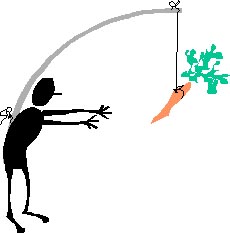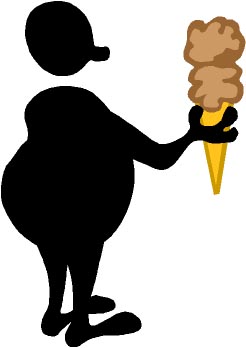(Or: How to wean kids away from wanting to be rewarded with "things")


The rewards or "reinforcement" that we use to recognize and promote appropriate student behavior differ in the degree to which they promote "inner control". Below, you will see various common "reinforcers" separated into 10 different levels. Level 10 includes "primary reinforcers" (food items), the lowest level of reinforcement. Level one items represent strong internal motivation on the part of the student. These kids don't need lower level reinforcers (although they are appreciated when given periodically).
Whenever you are trying to motivate a youngster,
always use the highest level of reinforcement possible (with
some regression at times for certain activities/reasons).
Initially, some youngsters will need food or tangible items to get them
to display appropriate behavior, but we will strive to help them move to
higher levels. We help youngsters to move to higher levels of reinforcement
by presenting the present reinforcers (for example, special
priviledges/level 7) at the same time as one at a higher level (for
example, social recognition/level 6). This "pairing" of reinforcers
helps the higher level one to take on reinforcing value (due
to it's association with the present reward). Lower level
reinforcers are then "faded out" (decreased)
as higher level ones start to work.
Your task:
In your groups of two or three (or by yourself if no one
else is around), add more reinforcers to each category (start
at the lowest level of "10" which you will find to be the easiest, and
move up to category "1"). You can find an answer key at the
bottom, but try to complete as much as possible before checking out those
options.
Level 1. Challenging
oneself for self-evaluation purposes
-evaluating one's own work (strengths and weaknesses)
and identifying ways to improve
-evaluating the work of one's peers on material that s/he believes
s/he has mastered
-designing the master key
-recording personal performance on a graph and setting goals
for oneself
-
-
Level 2. Deciding how s/he will
learn the material
-class discussion
-film strips
-language master
-reading/library research
-
-
Level 3. The work products effect
the look of the classroom
-designing and making a bulletin board that shows what has been
learned
-meeting a certain performance level allows the privelidge of
making room changes
(e.g., seating arrangement, paper taped
over the door window)
-
-
-
Level 4. Student
decides upon the conditions under which s/he works
(as long as s/he is on task)
-dim lighting
-music playing
-students decide when they have learned the material and may
stop at that point (for eval.)
-deciding on the order in which to study different subjects/topics
-
-
-
Highly motivated learners can perform
above this line
Level 5. Response
Topography (Students decide how they will display/evidence
their
knowledge/ability)
-writing their work on the board
-writing in magic marker
-recording their answers on audiotape
-
-
-
Level 6. Social
Approval (working for the recognition and approval
of others)
-displaying work on the "Super worker" board
-telephone call home to parents/guardians
-
-
-
Level 7. Special
Priviledges (effort/performance earns preferred
duties)
-filmstrip projectionist
-collecting assignments
-line leader
-
-
-
Level 8. Contingent
Activities.gif)
(The "Premack principle"---You must do the activity
you dislike to earn the one you enjoy)
-playing a favorite game
-learning a new magic trick from the teacher
-looking out the window at the construction crews
-
-
-
Level 9. Tangible Rewards![]() (something
that can be held/touched, but is not eaten)
(something
that can be held/touched, but is not eaten)
-achievement badge
-tokens to be used toward prizes
-
-
-
Level 10.  Edible Rewards ("Primary reinforcers")
Edible Rewards ("Primary reinforcers")
-peanuts (watch out..lots of kids have allergies
to these)
-raisons
-carrot sticks
-pieces of chocolate (many people now question
the use of "junk food" in reinforcing youngsters)
-corn chips (see comment for "chocolate", but what
if your student doesn't like "healthy" food?)
-
-
-
| Click here to read how one teacher used "Differential Reinforcement" to reduce hitting while moving the student to higher levels of reinforcement |
| Click here to see more possible reinforcers for each level |
| Click here to read how a teacher moved a young student to higher levels of reinforcement |
Activities and Discussion Questions
1. Into which categories do your classroom reinforcers fall?
2. Devise a plan to "fade out" your present reinforcers and help students rise to higher levels.
3. Think of a youngster whose behavior is inappropriate.
Identify desired behaviors and reinforcers.
** Loosely adapted from: D. Raschke (1981).
Designing reinforcement surveys. Teaching Exceptional Children,
December. (Some reference information was lost).
![]()
| Fetch Dr. Mac's Home Page |
Tom McIntyre www.BehaviorAdvisor.com